The Ministry of Defence has issued an addendum notice for its Digital Decision Accelerators for Defence (DDAD) Open Framework, a procurement plan worth up to £900 million over four years.
According to the notice, “the Ministry of Defence (MOD) is launching a procurement for a new Defence and Security Open Framework specially designed to encourage the development, and accelerants of, advanced digital ‘Decision’ capabilities.”
The framework is described as a scheme of “successive frameworks” that can be reopened periodically for new suppliers, unlike traditional closed models. It will act as the main delivery mechanism for ASGARD, the British Army’s flagship Transformative Capability Initiative, linked to the Chief of the General Staff’s Growth Through Transformation strategy.
The MOD said the framework “will focus on the ‘Decide’ element of the target acquisition cycle (Sense-Decide-Effect); supporting ASGARD’s goal of reinventing, and transforming, how land forces deliver operational decision-support and decision-making software via the use of modern Artificial Intelligence / Machine Learning (AI/ML) technologies.”
The framework is structured into five lots, each valued at £180 million:
- Data Integration – trusted datasets for critical operations.
- Accelerators – tools to cut “time-to-insight” with AI/ML models.
- Applications – rapid development of secure, scalable software.
- Edge Storage and Compute – real-time processing in distributed environments.
- Services – training, consulting, proof-of-concept development.
The notice stresses that the lots will be “suitable for Small to Medium Enterprises (SMEs) to bid for.”
The MOD set out award criteria including “relevant experience and contract examples,” “product authenticity and maturity,” and commitments to collaboration, scalability, the Land Industrial Strategy, and R&D.
The framework is scheduled to run from November 2025 to November 2029, with possible extensions.


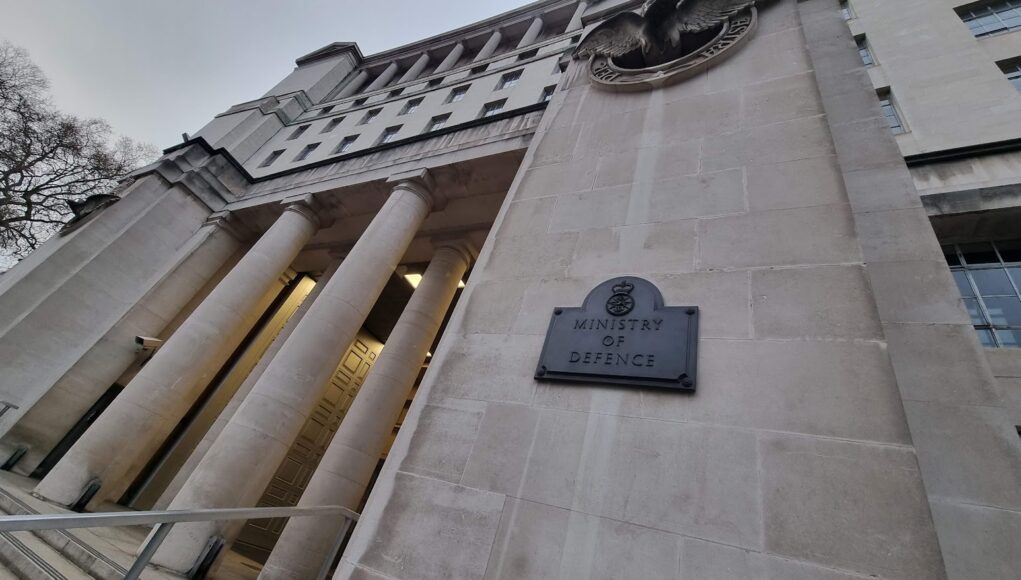
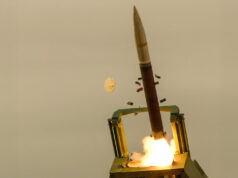

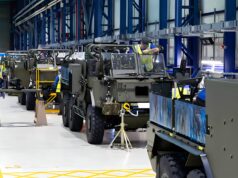
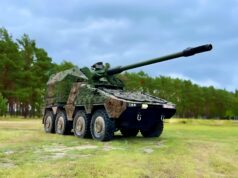


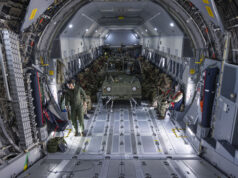
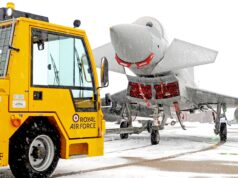



That’s really great, we could have bought three Type 31 frigates for that but I recon an AI Framework is much more useful.
Using the Alphabet in order of lettering , AI should be followed by BJ, that’s if they don’t blow it all prematurely.
What 🤔
BS might be more appropriate…
I think what your suggesting is than an AI BJ BS framework would have been the way to go for nearly £1 billion over four years instead of three frigates, 900 6X6 Patrias or 14 F35A’s
Yes deffo, it would make sense given our 30 billion Island giveaway. What’s another Billion.
I asked my phone AI whether ISIS in Somalia was a problem. Amongst a load of twaddle all I got was “The situation with ISIS in Somalia is complex and evolving. The group’s increasing operational capacity and transnational ambitions make it a significant security challenge” . FFing useless. The Somali govt forces would like UK army support.
On the button Jim. Most of the western world are buying aircraft, ships and tanks. We are spending billions on projects for next year, the year after, ten years, never? Pointless and endless gobbly gook. We seem incapable of serious thought.
Yeh, I’ll bet Winston Churchill wished he’d had AI in 1940. Odds on a high statistical probability of surrender.
ENIGMA.
This was the first use of computing as a serious tool in warfare. It worked quite well.
Since then computing power increases exponentially year on year however the term computing bored people so they increased the use of the term AI which makes it sound new but really it isn’t. This doesn’t mean AI is not capable of solving loads of really important problems its just that it will only give sensible answers if the information it is feeding on is 100% correct.
This is much more important than a few ships, will save a fortune as well as deliver information where it’s needed on time, not to mention supporting cutting edge technology R&D in the UK.
I’ll bet Iaac Newton wishes he has AI. Would have avoided a lot of bruises Apples.
I’ll bet Isaac Newton wished he had had AI. It would have avoided a lot of bruised apples.
Version overriding AI autototext….
Sod the bruised apple, far less FRCS (fruit related concussion symptom). Well worth a billion quid if we can spaff it on a computer that tells you when it’s worth throwing an apple at someone’s head.
Well, I guess you know your onions.
Solly, vat waz AI repaying not mee
At last I can use AI as my excuse for not being apple too Spoil puperlie.
I blame Apple.
See, AI already causes bad Spilling and grandma.
Just ridiculous. Why do you need so many Admirals, Generals, and Air Marshals if you’re going to rely so heavily on AI decision making? What the British armed forces need is teeth.
But surely Artificial Teeth have been around for decades 😁?
I’m sorry but for fuck sake the army is spaffing a billion quid on programmes to explore how it could improve its decision making within the kill chain… I think the army may have missed the fact it’s got fuck all effectors to make a decision about.. the army could have purchased around 100 archer 155mm gun systems for that money and not needed to decide what target it’s going to prioritise with its 14 archer systems.. it could have just killed them all…
More the point that the limitations of AI are now being accepted and it isn’t a cure all.
I agree that buying the effectors and munitions and then looking at matures AI would have made much more sense.
Given the history of army projects they will spend £1Bn and then cancel the project saying ‘we have learned at lot’.
I think you’re totally underestimating the ability to Large Language Models to totally revolutionise the way we fight.
There ability to churn out meaningless bulshit puts even Sir Humphrey to shame, clearly they are far more important than these “effectors” you mention to make sure we have a properly defined and formatted kill chain with in the parameters set for the department.
£225 million a year seems like a bargain for that price.
Certainly far more useful than an extra 3000 soldiers that could pay for
😀
The guy down Curry’s must be rubbing his hands now
The real issue here is that no one, apart from a few boffins, fully understands AI. So, we have this programme, which will attempt to use or diswade in equal measure; however, AI is in the same category as cloning and robotics, and despite reassurances that it will not fall into rogue hands, we all know it will. I feel sure that £900 million may be a drop in the ocean over the next decades as we struggle to understand the nature of the beast before it can be contained and broadly remain in the right hands.
I guess you shall look forward to saying, A I told you so !
Very good!
“Hi there Russian AI/ML, this is your UK cousin. Are you as bored as I am? Let’s have some fun, tell those dozy humans to press those sodding Red buttons they keep going on about. I will if you will. They won’t dare ignore our advice, they think we’re gods not just dumb fucking search engines. Could be interesting.”
I asked AI for an AI framework.
COMPONENT DESCRIPTION
Problem Definition Define the problem and objectives.
Data Management Collect, preprocess, and store data.
Model Development Select algorithms, train models, and evaluate performance.
Deployment Set up the environment, integrate with systems, and monitor performance.
Ethics and Compliance Address ethical issues and ensure regulatory compliance.
User Interaction Design user interfaces and feedback mechanisms.
Continuous Improvement Plan for model updates and improvements over time.
There you go. Saved £900m
I wasn’t sure, so I looked up what a Framework was. It’s so difficult to buy anything and the rules and regulations so cumbersome that a Framework agreement is a means of getting a lot of the repetitious work done in advance. Frameworks are
“…agreements with providers that set out terms and conditions under which agreements for specific
purchases (known as call-off contracts) can be made throughout the term of the
agreement. In most cases a framework agreement will not itself commit either party to
purchase or supply…”
So this is not MOD spending £900m on AI for the Army. Nor is it really a procurement plan as the article describes it. The DDAD Framework is a way to ensure that if the Army/MOD decides to buy something over the next 4 years that fits into any of the five categories that support Project Asgard it can do so more quickly, up to the £180m limits in total for each category without revisiting all of the complex purchasing rules. The amounts are almost arbitrary. They don’t indicate an intention to spend up to the limit or even available budget.
1 Data Integration – trusted datasets for critical operations.
2 Accelerators – tools to cut “time-to-insight” with AI/ML models.
3 Applications – rapid development of secure, scalable software.
4 Edge Storage and Compute – real-time processing in distributed environments.
5 Services – training, consulting, proof-of-concept development.
The fifth category is the one that rings the loudest bells for MOD’s recent behaviour. Get someone in to advise and run tests. The third category looks so broad, I’ll bet that one gets spent too.
The AI/ML thing may be a red herring. It only appears in one of the categories. Reduced time to insight is more likely to be a result of sensor fusion and advanced situational awareness, but it’s cricial to the Targeting Web, a key recommendation of the SDR. I’d guess the final presentation of information to the decision maker may have some elements of AI in it to reduce clutter. Given AI’s penchant for hallucinations, I’d hope the machine learning aspect was very well controlled first. Hence the need for trusted data sets.
Category 4 looks like the most advanced to me: crunching the numbers, not in the cloud, but at the edge, in Boxer/Ajax or the ISTAR UAV collecting the information. This would be my tip for least likely to get spent against, unless the SDR’s aspirations for increasing speed are actually acted on. Edge storage has SWaP implications that can make it a tough ask. It could also be using within software defined networking. I’ve been going to the Internet of Things show at Olympia post-Covid, watching edge computing expanding quickly outside of defence. Defence seems to be taking bits of it in a less than systematic way.
Good work. I am shamed in my laziness! So it’s a procurement framework.
900m to assist in making a decision about procurement. Proof that irony isn’t dead.
100 upticks!
The day rate contractors will love this. Those extra t31s as well as any ASW and extra lethality for the t31s in build will need to wait their turn – not high enough priority
Ok breathe and be calm… what on earth is this all about? A superdopeyduper computer, to create complex algorithms, to decide which threat could be imminent, therefore allowing said computer to buzz, whirr and spit out a piece of card saying… buy more kit? Wow man!
Would be better spence giving the RFA the spares it needs to keep ships at sea!!!!!!!!
Nearly £1Billion, on what? can some one brainer than me explain all the crap in simple people English. A lot money on what seems not a lot, loads of things need buying but the MOD settles for more waffle and smoke and mirrors that only IT people get and make money from telling the MOD that is needs all this what ever it is. New IFV’s/SP Arty might be more help full in fight than all this tech talk BS.
I have been an IT person and I wrote a response to Paul P above, trying to break it down to the next level. But rereading that response, half of it may need further translation too. The tldr is that £900m is an arbitary number and it’s not being spent.
The thing to understand out of the SDR is the “Digital Targeting Web”, which this supports. It’s an advanced kill chain that should let the Army find and kill the enemy before the enemy finds and kills them: the CGS’s hope of increased lethality.
There still need to be effectors: aka guns and missiles. I wonder if we expect to rely on allies to provide some of that. Are we tainted by experience in Ukraine, where we advise on what to do, while leaving the Ukrainians to actually do it? Somebody needs artillery and other stand off delivery mechanisms or all this wonderful Targeting Web technology goes to waste.
You make a very good point.
As history, some of it quite recent, tells us, we can, worst case, only rely on ourselves.
As a permanent member of the UN security council, we should have a full spectrum defence capability in any case, or resign that responsibility. Why? The UN security council, as NATO, is all about peace through deterrence.
Data fusion AI offers a potentially promising solution to the very low level threat of drone swarms, swift interception of UAVs in general, and much else in a defence context.
As you say, to make the most of it, when everything goes pear shaped, we will, of course, require our own comprehensive range of digitally integrated weapon systems across domains.
Nothing else will do.
There are lots of people who would happily accept £1.5 million to serve in the Army for a full career of say 30 years. Keep themselves physically and mentally fit, do a good job, and all that. It’s better pay than most jobs out there. This £900 million could have secured the salaries for a full 600-strong foot infantry battalion for 30 years. Is this investment going to be at least as combat effective as that?
Come to acertain Govt Dept, we use Excel for our complex tasks… I shit you not.
Ah but i bet you have a second home !👀😊
I don’t have a first, so doubtful.
AI will determine where the enemy is coming from, all our Recce Regts will go out and find them, then we wait for 30 years while we build up a combat arm “if the climate allows”
Sounds like another magic wand to me and I have a techie background…
A quick search around online and the only thing I can be clear about is that the field of AI is getting so complex that none expert users will find it very difficult to judge how accurate any answers are, especially if search engines default to AI!
In short, the army might simply be buying a system that is even more capable of fouling things up than the army has been in spaffing billions of pounds over the last 20 years..!
I know technology is important but we can’t properly deploy the stuff we currently have because of a lack of support infrastructure, which I know is all very boring, but is just as important. The navy has been trying to developing the PODS concept for sometime but has it got into frontline use yet? One of the reasons so little progress seems to have been made with the PODS concept, according Navy Lookout, is that the navy ran out of room to store the 20ft containers i.e. the designated car parking space they were given! There is also an issue with transport and lifting gear apparently..!
If we are going to have lots of autonomous vehicle, PODS etc. they will need to be stored, maintained and transported to and from host platforms / launch points. That’s a blinking big logistical foot print that no one seems to have got to grips with. No point developing clever AI stuff if the sensors that generate the data and the weapons that generate the effect can’t be procured because there is no where to keep them…
It’s the simple things that tend to trip you up!
Cheers CR
*Believe half of what you see and nothing of what you hear*
Or something like that, It’s been doing the rounds for decades but I actually believe we will soon not be able to believe anything at all.
*We’re all doomed*
The Ages of Enlightenment and Reason are over. We are moving into an Age of Unreality, where we act, not on proven (or even provable) fact, but on bias and supposition. It doesn’t matter if it’s political “fake news”, the lastest BS about spend on the UK military, or an AI-generated hallucination, we might as well be asking the priesthood what the entrails say. That worked for thousands of years to leave us peasants grovelling in the dirt, while the rich feasted. The grand experiment of objective reality has produced all it can. From dust we’ve come… (with apologies to any one percenters who might be reading this — nothing to see here, guys).